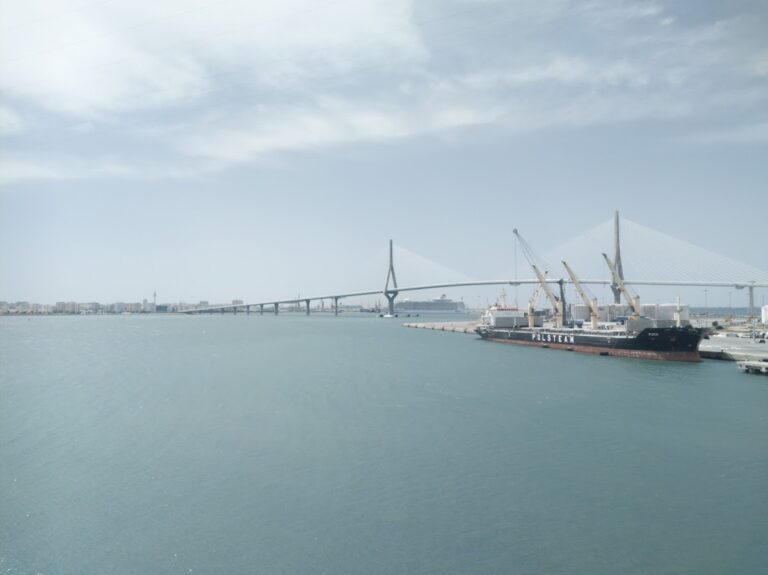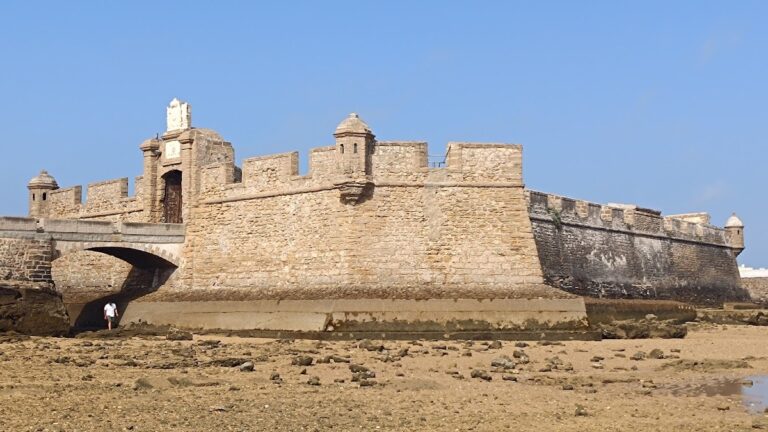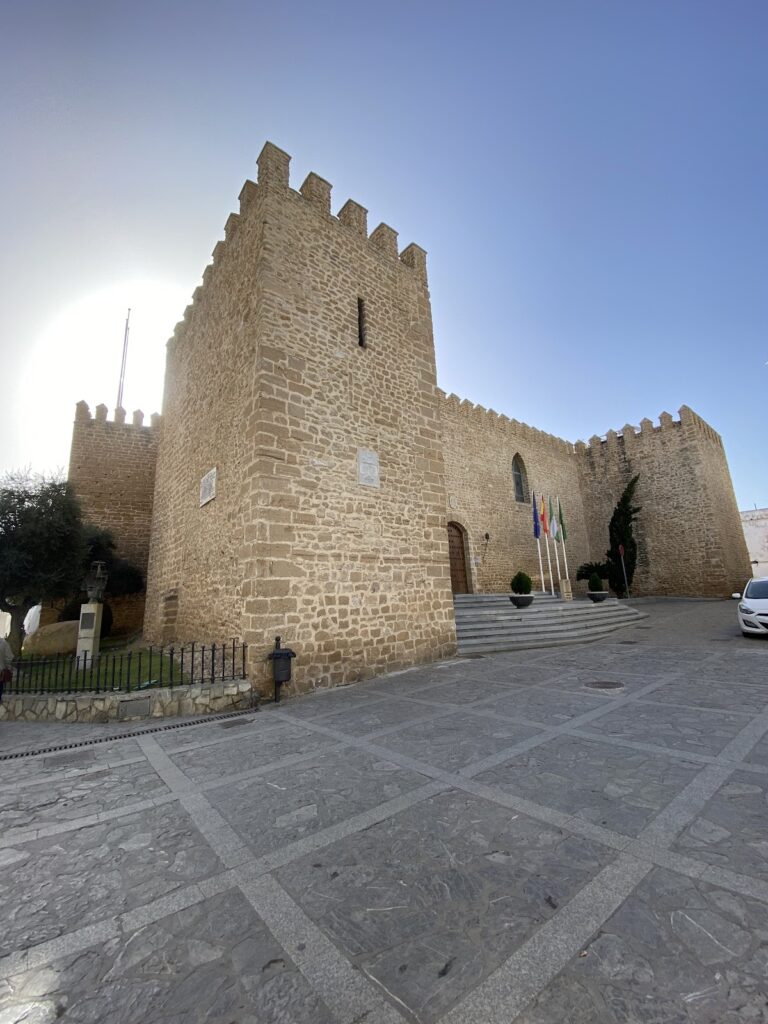Castillo de San Marcos: A Historic Fortress in El Puerto de Santa María, Spain
Visitor Information
Google Rating: 4.4
Popularity: Medium
Google Maps: View on Google Maps
Official Website: castillodesanmarcos.com
Country: Spain
Civilization: Unclassified
Remains: Military
History
The Castillo de San Marcos is located in the town of El Puerto de Santa María, Spain. It was originally constructed by Christian forces during the reign of King Alfonso X, who oversaw its establishment after the city came under Christian control in the mid-13th century.
Around 1264, following the Christian conquest of El Puerto de Santa María, King Alfonso X ordered the building of the castle atop the foundations of an earlier mosque. This change reflected the shift in religious and political power, transforming a site of Islamic worship into a fortified Christian church dedicated to the Virgin Mary. Alfonso X not only erected the castle but also incorporated remains from a nearby Roman structure, enriching the foundation and structure of the building. To strengthen the fortress, four towers were added: two with hexagonal bases and two square ones. Notably, the ground floors of the hexagonal towers were designed to serve as chapels honoring the Virgin of the Miracles. The site retained several architectural features from the mosque, such as the qibla wall, which indicates the direction of Mecca, and the location of the mihrab, a niche used in Muslim prayer spaces.
During this period, Alfonso X established the military Order of Santa María de España within the castle. This order, created to defend Christian territories, was later merged with the well-known Order of Santiago, reflecting the evolving military and religious landscape of medieval Spain. The fortress played a crucial role in guarding the town against invasions from North African forces.
Ownership of the Castillo de San Marcos passed through several notable figures. Admiral Benedetto Zaccaria, a Genoese noble, held the castle for a time. Later, it came into the possession of Alonso Pérez de Guzmán El Bueno, a prominent Castilian nobleman who, in 1306, donated the fortress to his daughter Leonor de Guzmán. This gift marked the beginning of the House of Medinaceli’s longstanding rule over El Puerto de Santa María.
In the 15th century, the castle underwent significant expansion. A sacristy consisting of three bays was added, each covered with Gothic-style vaults. Additional rooms were constructed above the church vaults, accessible from the terrace area known as the patio de armas, or “courtyard of arms.” This phase also coincided with the presence of famous mariners such as Christopher Columbus and Juan de la Cosa, who frequented the fortress during the time of Luis de la Cerda, highlighting the castle’s role as a maritime and military hub.
As El Puerto de Santa María grew, the castle’s importance as both a sanctuary and defensive stronghold diminished. This decline was accelerated after the construction of a newer church in the town. Although the Medinaceli family retained ownership after the city became part of the Crown of Castile in 1264, the fortress was eventually closed in 1868 and left abandoned for several decades. Restoration efforts took place in the 1940s, preserving the site for future generations.
The castle’s rich history is reflected in cultural works such as the Cantigas, a collection of songs attributed to Alfonso X, which reference its construction and legacy. In the 19th century, the castle was also described in the novel “Un servilón y un liberalito” by Fernán Caballero, underscoring its lasting presence in Spanish cultural memory.
Remains
The Castillo de San Marcos stands on flat terrain approximately 13 meters above sea level, near the southwestern coast of Spain, just southwest of the town center of El Puerto de Santa María. Its overall layout showcases a blend of medieval military architecture with preserved elements from earlier periods.
The fortress is anchored by four sturdy towers, two featuring hexagonal bases and two with square-shaped foundations. These towers were constructed during Alfonso X’s reign, integrating Roman masonry materials recovered from a nearby building. The use of such recycled materials spoke to practical resourcefulness and maintained a connection to the region’s ancient past. Notably, the lower floors of the two hexagonal towers served as the main chapels dedicated to the Virgin of the Miracles, blending the castle’s military function with its religious significance.
Among the most remarkable preserved features are remnants of the original mosque on which the castle was built. The qibla wall, which in Islamic tradition faces towards Mecca to orient prayer, remains identifiable, as does the location of the mihrab, the ornamental niche marking this direction. These elements exhibit classic Almohad architectural traits, including smooth horizontal lines and vaulted ceilings supported by ribbing. These features reveal continuity in construction techniques even as the site’s religious role transformed.
The 15th-century expansions introduced a sacristy with three distinct sections, each covered by Gothic-style vaults characterized by pointed arches and ribbed stonework. This addition reflects the evolving architectural styles of late medieval Spain and the castle’s ongoing adaptation for religious and defensive purposes. Above the church vaults lies the patio de armas, a terrace area from which several rooms are accessed, indicating the castle’s function as a fortified residence and military command center.
Inside the castle today, visitors can observe a bust of Juan de la Cosa, the famed cartographer and mariner associated with the early Age of Exploration. A small fountain features a replica of his 1500 nautical map, originally created in El Puerto de Santa María and preserved in the Naval Museum of Madrid. These commemorations connect the fortress to Spain’s maritime history and exploration legacy.
Throughout its long history, the Castillo de San Marcos has preserved a fascinating architectural palimpsest, combining Roman foundations, Islamic elements, medieval Christian fortifications, and later Gothic additions. The visible layers of construction tell a story of conquest, religious transformation, and military strategy that spans centuries.










